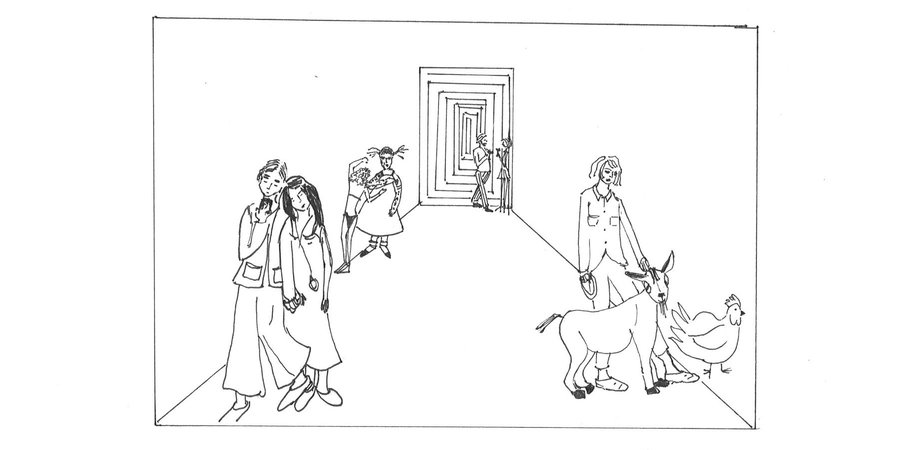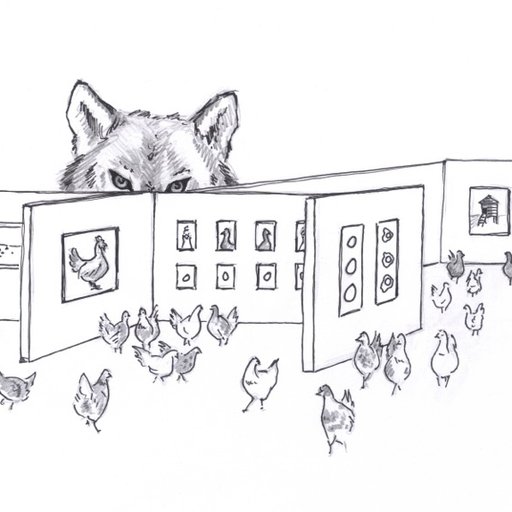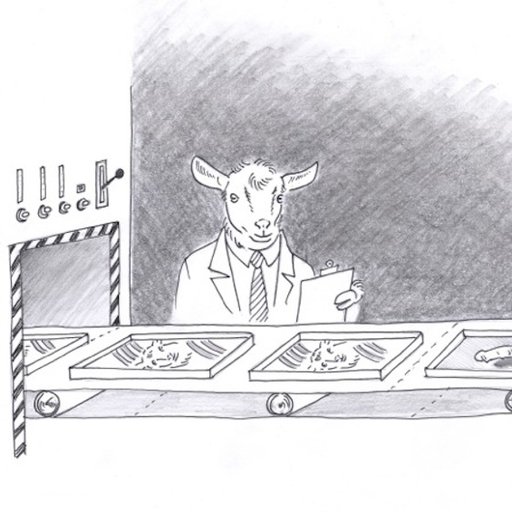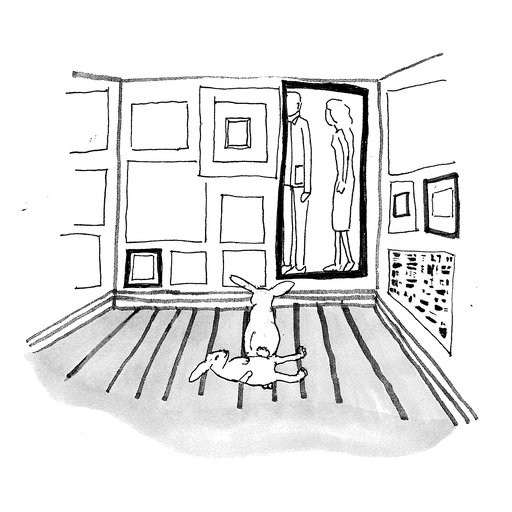Kristen Dodge ran the eponymous DODGEgallery on Rivington Street between 2010 and 2014, when she closed shop and moved with her husband, Darren, to Kinderhook, New York, where they live surrounded by art in a contemporary barn that is itself surrounded by the makings of a small farm. This is the debut of Art vs. Farm, her new column on Artspace chronicling her observations on the intersections of these seemingly polar, living subjects.
I remember trying not to gape at the bald, gender-bending couple sauntering past in drag like Siamese twins at a carnival. This was my first experience at an art fair. I felt like Alice in Wonderland. The bright fluorescent lights, maze of white walls, and parade of proud visitors were fresh and exhilarating. Carts of pink bubbly rolled by alongside snakeskin heels, a fabric VW Beatle sagged with string tassels, and simulated cigarette butts littered a corner like spent confetti. My eyes took in everything. I remember buying a small, flat woodcarving that was segmented into thirds, each part a severed section of an animal: the scull of a skunk, the torso of a donkey, and the ass of a fox. Everything made perfect sense.
But that was a long time ago, before art fairs became a relentless necessity. It’s not a secret that fairs are one of the reasons I closed my gallery, in its former iteration. The more ambitious we were, the more fairs we had to do. From a practical perspective, it was too taxing for us to spend most of our resources applying to, participating in, and recovering from fairs. They had also become routinely uninspiring to me, with few exceptions. During my last experience at an art fair I reverted to a two-year old: Blah blah blah blah. Can we GO now? When are we leaving? I ignored all of the ‘important’ people I knew, or knew I should know, and limited conversation to snacks and sneakers. That was the day I decided to close the gallery. It was one of the first times in my life when I moved swiftly away from, rather than toward, something with uncompromising conviction.
Last summer I fell in love with fairs again. But instead of pandering to people who subscribe to their own exceptionalism (I’m not an exception), I was accosted by carnies at the Columbia County Fair. "C’mon! Step right up! Win a prize!" There was a rodeo, tractor pull, and lawn-mower race. All were exhilarating and rough. Parents of young children were unfazed by toxic air baths exploding from custom-fucked engines. Instead of champagne and cheese plates, our snack options included grease, ass, and onions. We ate Greek gyros served by Mexicans who didn’t reject my bastardized translations. Someone in line flinched and told me that these people don’t speak Spanish. Greek people serve Greek food. And Artforum is for people who write for Artforum.
We skipped the Budweiser tent and went straight for the children’s magic show. The beating sun and mediocre tricks didn’t dissuade my deep and vocal enthusiasm. I stopped volunteering when I realized my primary competition was the kid with Down syndrome kneeling behind me. At the end of the show they were selling magic wand kits, which were significantly lighter and less expensive than a Phaidon monograph. We wandered into the cattle, goat, and sheep barns, passing each stall where animals were treated to fresh hay, affectionate petting, and lengthy naps. This was nothing like groomed gallerists standing in high heels for extraordinary lengths of time without food or water.
We also enjoyed the exhibition of workers humming skillfully away at dead trades. There were alabaster Amish sisters spinning white wool on wood wheels, and bearded blacksmiths burning and beating dusky metal. The barn was full of working hands—thick hands, slight hands, dirty hands, and delicate hands. I thought about the difference between hands at work on a trade and hands at work on art. One necessarily repeats to master and produce, and the other repeats to master and deviates to create. Both can be inventive, both can be repetitive. The worst-case scenarios, however, are when a tradesperson has no skill and an artist avoids change. What I began to see at many art fairs was that time limitations, production demands, and artist branding worked against creativity.
Back to the county fair. We hopped onto a ride that I had been on many times as a kid. I call it "The Pirate Ship." To maximize the effects of increasing velocity, it’s best to sit at the end where you think you might die. A handful of other fairgoers joined us. I worried about the insubstantial safety bar and the small girl sitting a few rows ahead. The ship began to rock back and forth, higher and higher, and soon there was a maniacal outburst of screaming, laughing, and crying. I was slow to realize that the noise was all coming from me.
























